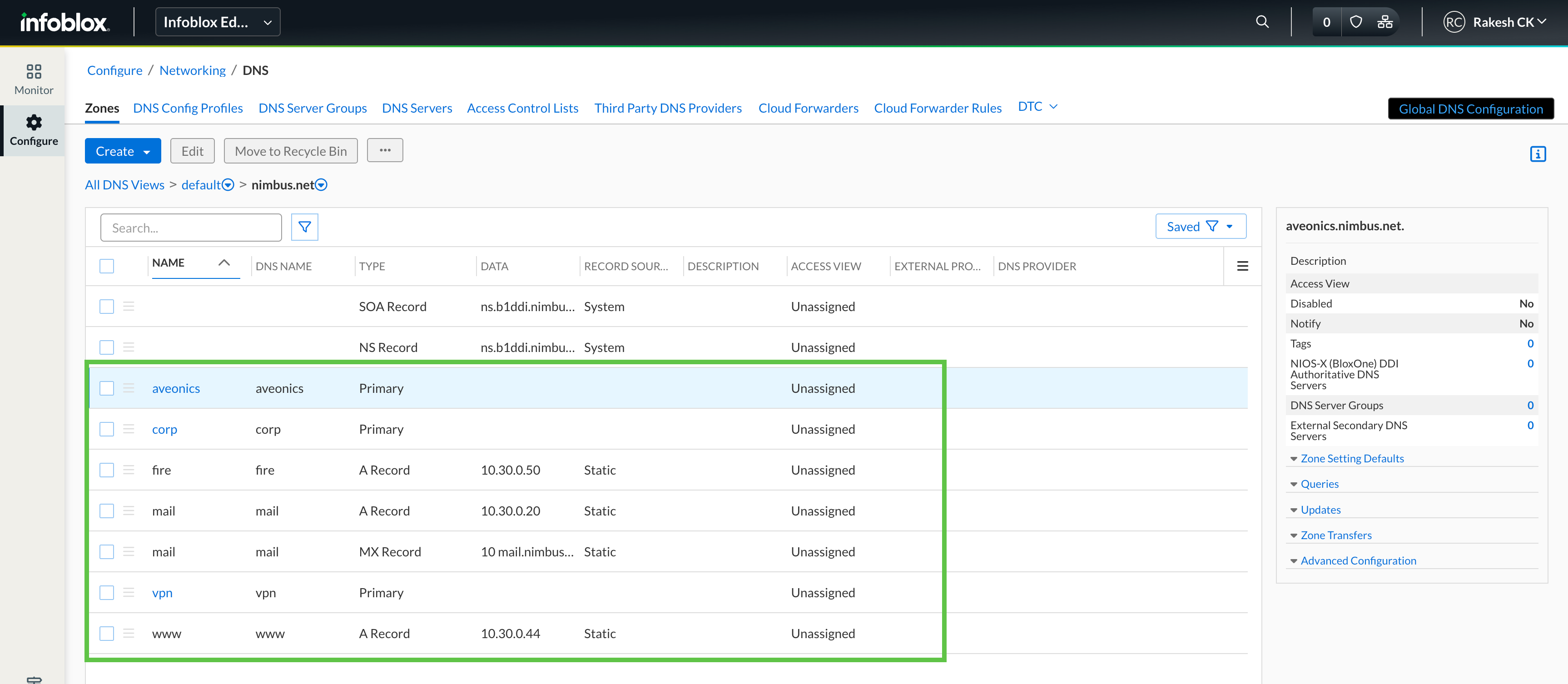Data Importing in Universal DDI (2591)
Scenario
The IT team at Nimbus Avionics is moving its network data into Universal DDI. Instead of manually creating each object, they’ve prepared an Infoblox-specific CSV file that contains all required data.
The first file includes the core setup: IP spaces, networks, fixed addresses, and DNS zones.
The second file contains supporting details: DNS records, subzones, and DHCP ranges.
Your task is to import these files into the Infoblox Portal and then validate that the objects appear correctly.
Estimate Completion Time
15 - 20 minutes
Prerequisites
Administrative access to the CSP
Course References
Tasks
You may use the VMs jump-desktop to perform this task because the import file is located in the shared folder on this desktop.
To complete this lab, you need to perform the following tasks.
Navigate to Infoblox Portal and note down the IP space, networks, fixed address, and DNS zones currently available.
Import the first Infoblox CSV objects file, CSP-Import-1.csv.
Verify that IP space, networks, fixed address, and DNS zones were imported without errors.
Import the second Infoblox CSV object file, CSP-Import-2.csv.
Verify that the DNS records, subzones, and DHCP ranges were imported without errors.
Task 1: Navigate to Infoblox Portal
Log in to the Infoblox Portal and review the objects currently available. Note any existing IP spaces, networks, fixed addresses, DNS zones, records, subzones, and DHCP ranges. This will give you a baseline before starting the import process.
Task 2: Import the first CSV file
Import the file CSP-Import-1.csv from the Shared drive. This file contains the core objects—IP spaces, networks, fixed addresses, and DNS zones—that will be added to the system.
Task 3: Verify core objects
Once the import is complete, check the import job status to ensure there were no errors. Then, navigate to the Infoblox Portal and confirm that the IP space, networks, fixed addresses, and DNS zones appear there.
Task 4: Import the second CSV file
Import the file CSP-Import-2.csv from the Shared drive. The file includes additional objects such as DNS records, subzones, and DHCP ranges.
Task 5: Verify additional objects
Once the import is complete, check the import job status to ensure there were no errors. Then, navigate to the Infoblox Portal and confirm that the DNS records, subzones, and DHCP ranges are visible and correctly associated with the appropriate zones and networks.
Solutions
Task 1 Solution: Navigate to Infoblox Portal
Using VM jump-desktop, log in to Infoblox Portal.
Navigate to Configure → Networking → IPAM / DHCP
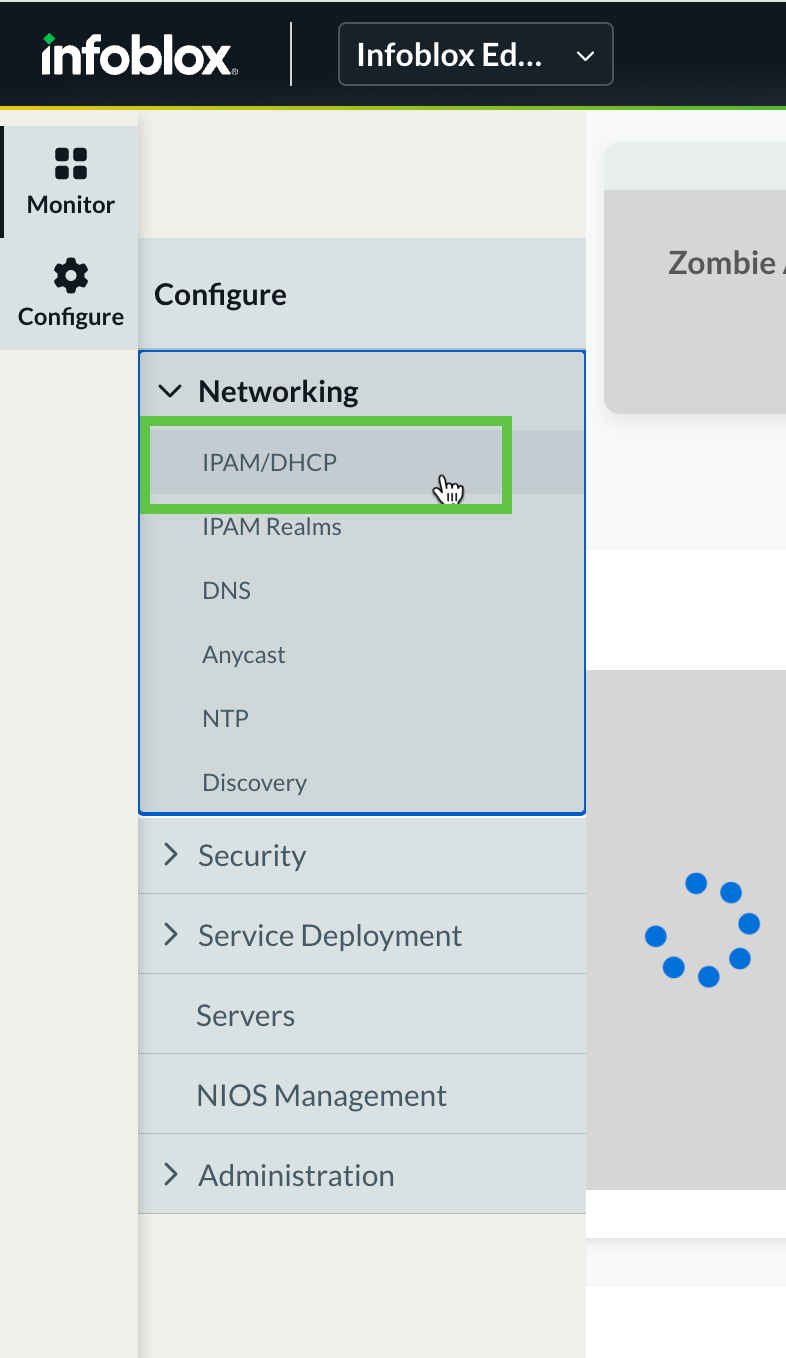
Under the Address Spaces horizontal tab, you can see that there is no IP Space.
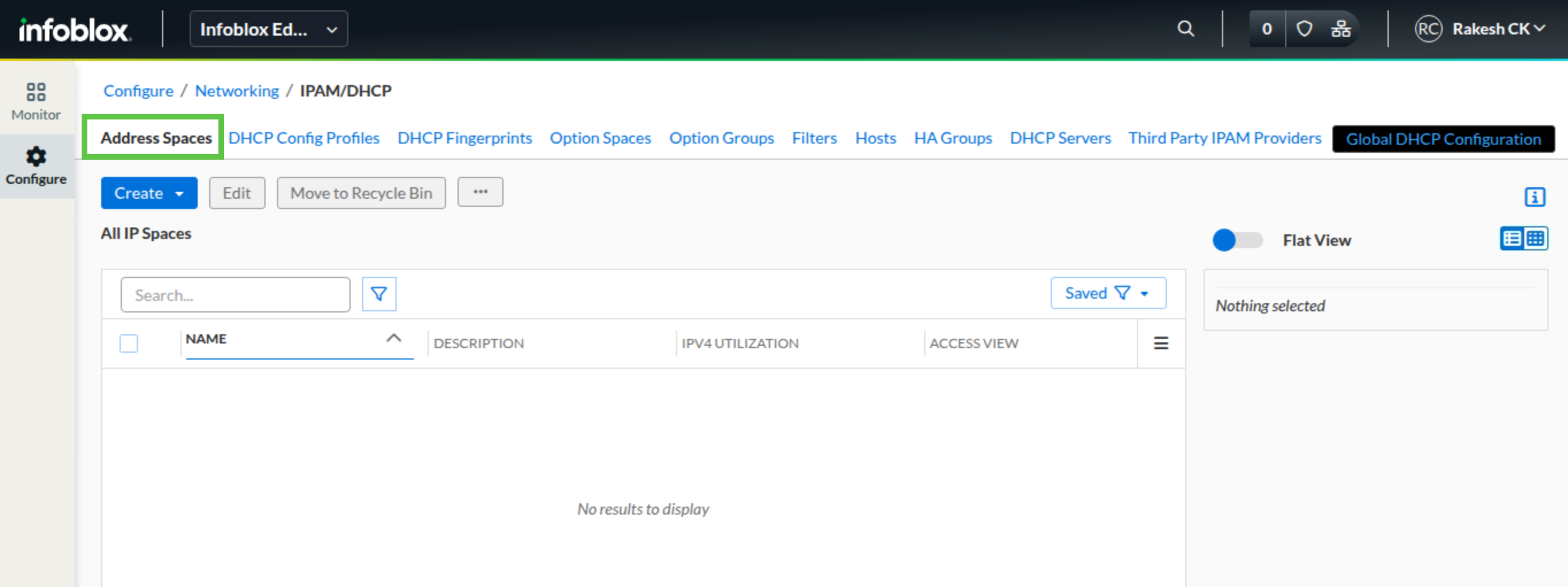
Now, navigate to Configure → Networking → DNS
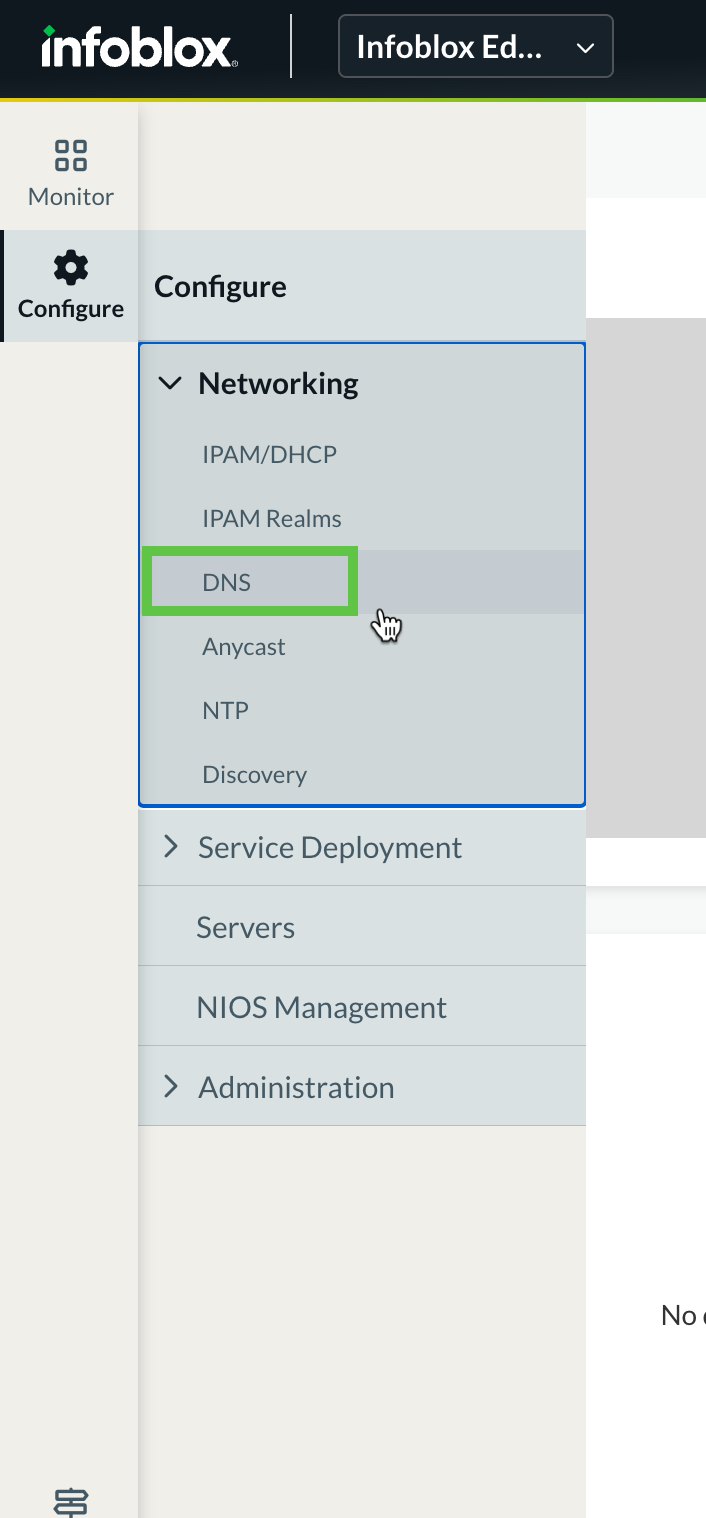
Under the Zones horizontal bar, click on the default DNS View
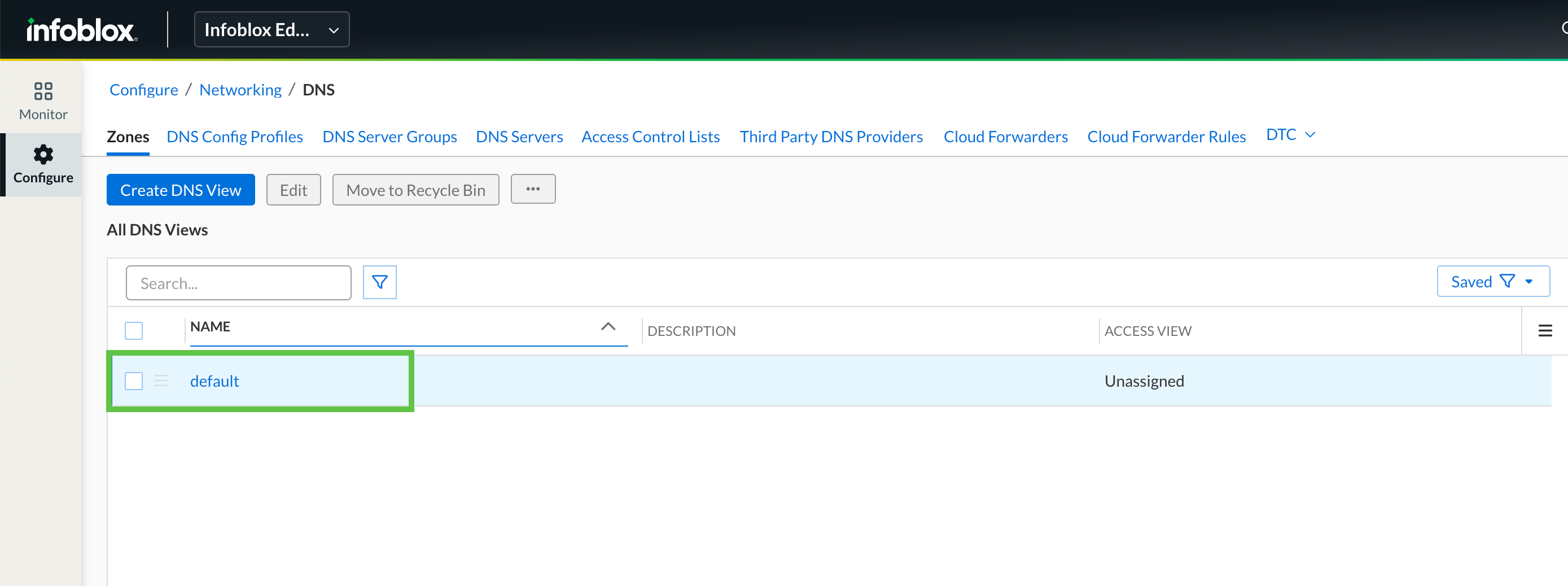
In the Zones horizontal tab, you can see that there is no data.
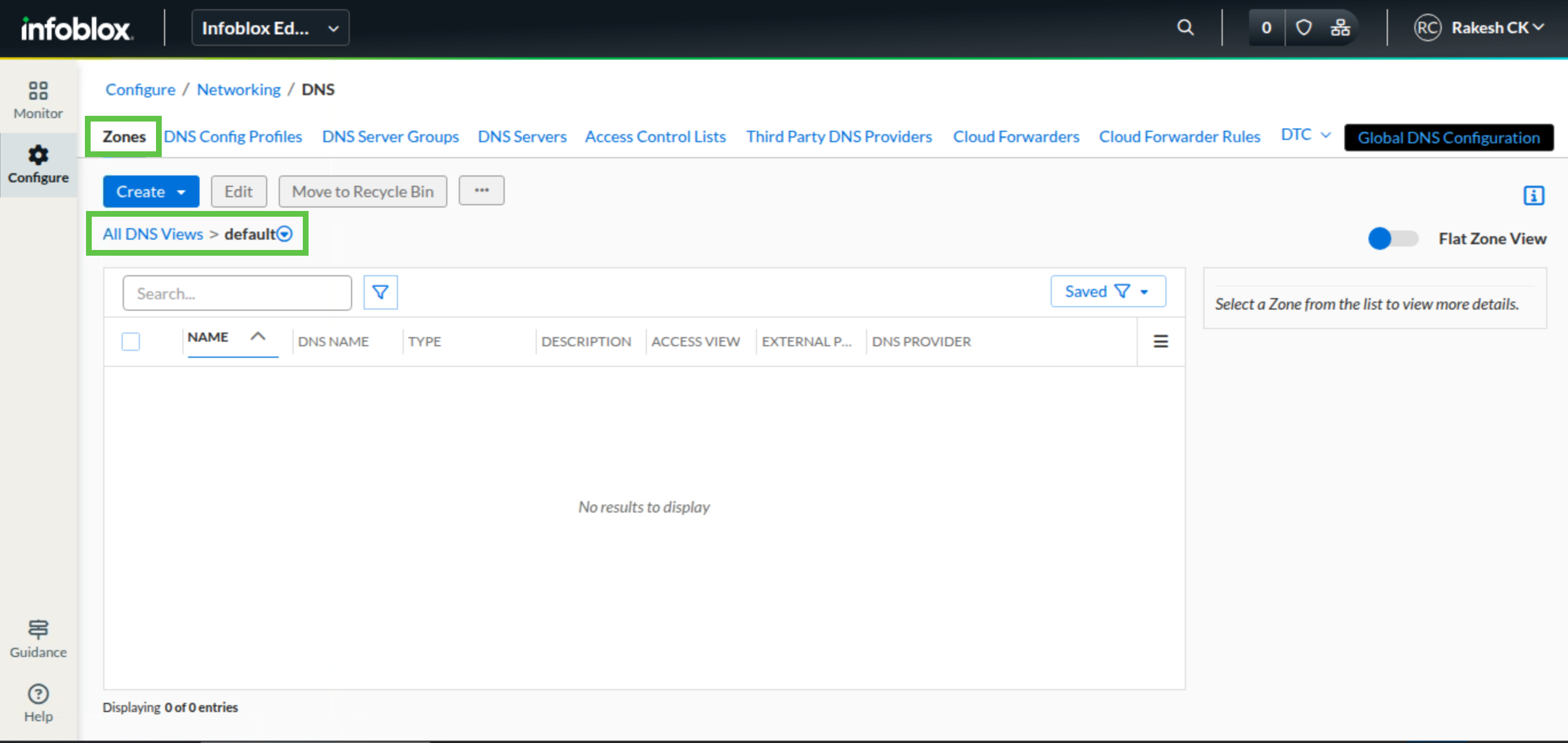
Task 2 Solution: Importing the first CSV file
Using VM jump-desktop, log in to Infoblox Portal.
Navigate to Administration → Data Import / Export
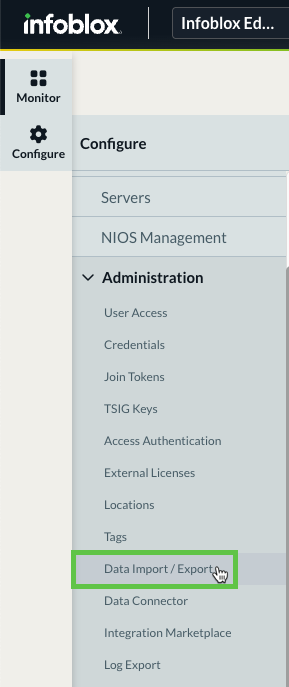
Click on the Import submenu, and click the Import button to start configuring an Import process
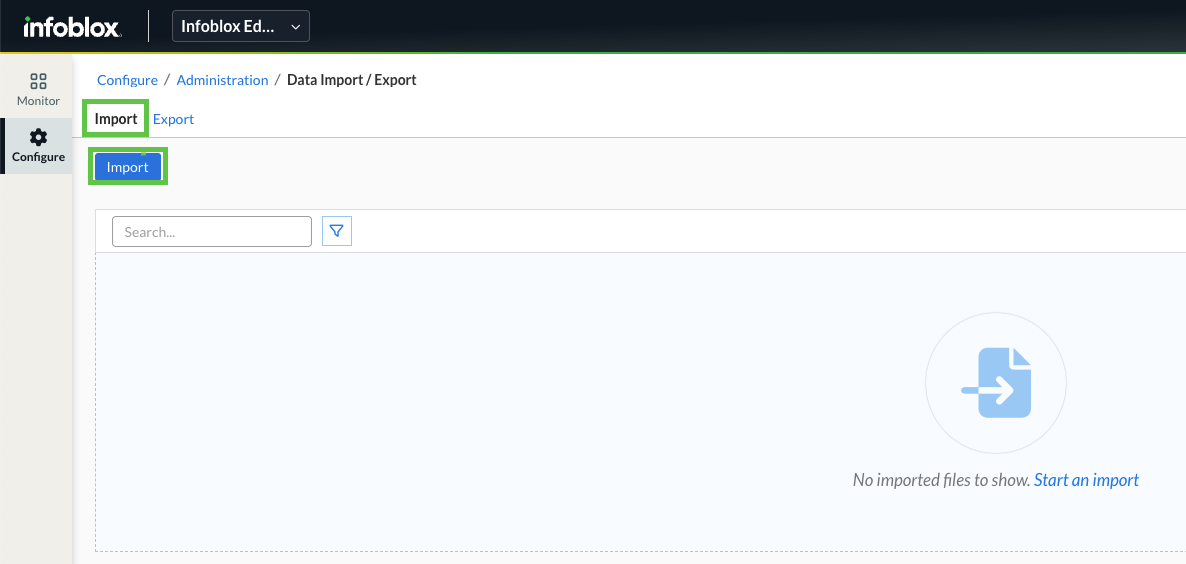
Give the Data Import the name Import 1 and click Next
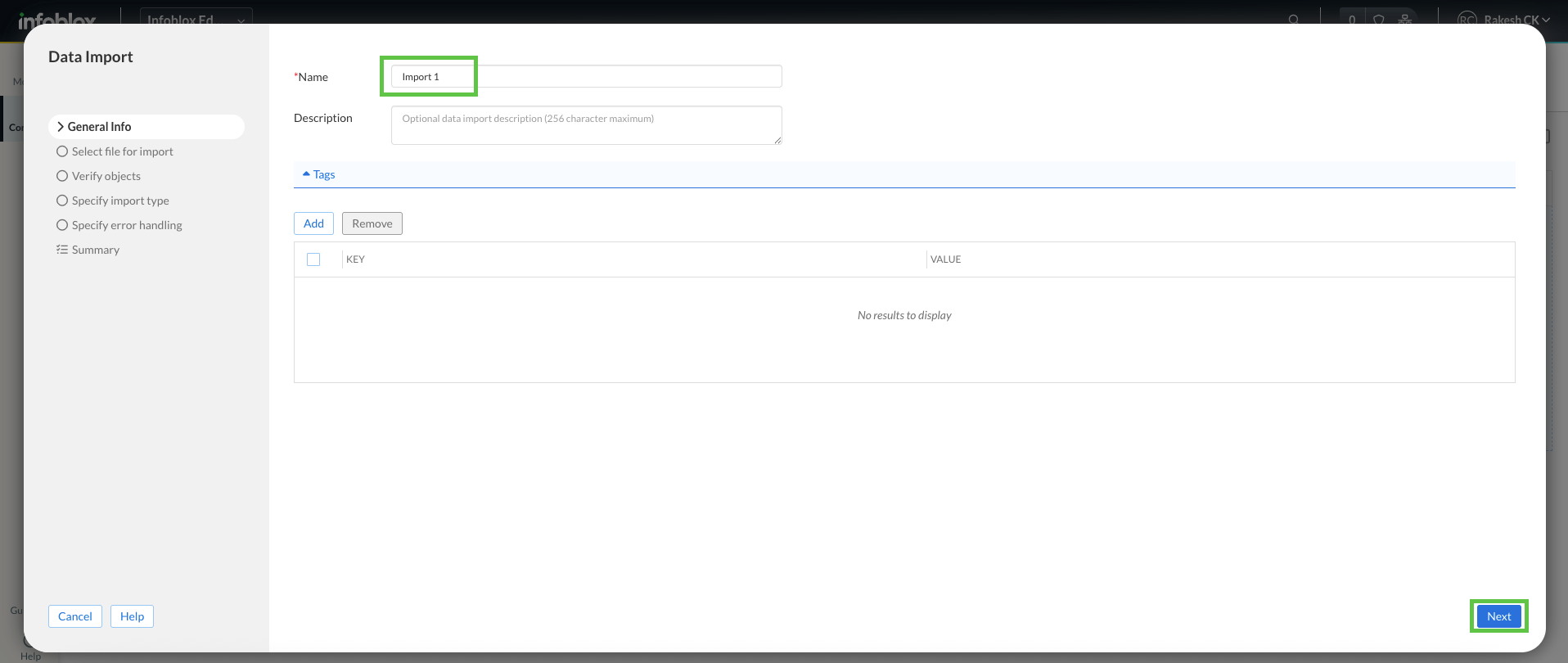
Click Select File
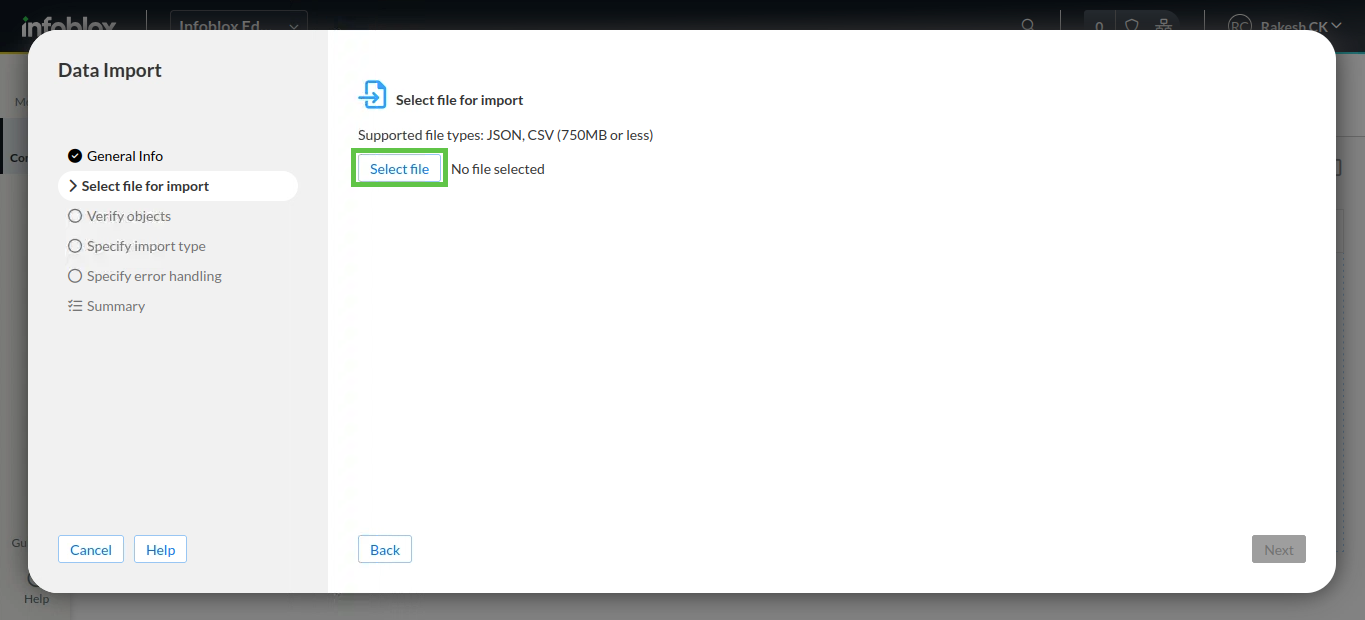
Select the CSV file in Shared Drive named CSP-Import-1.csv
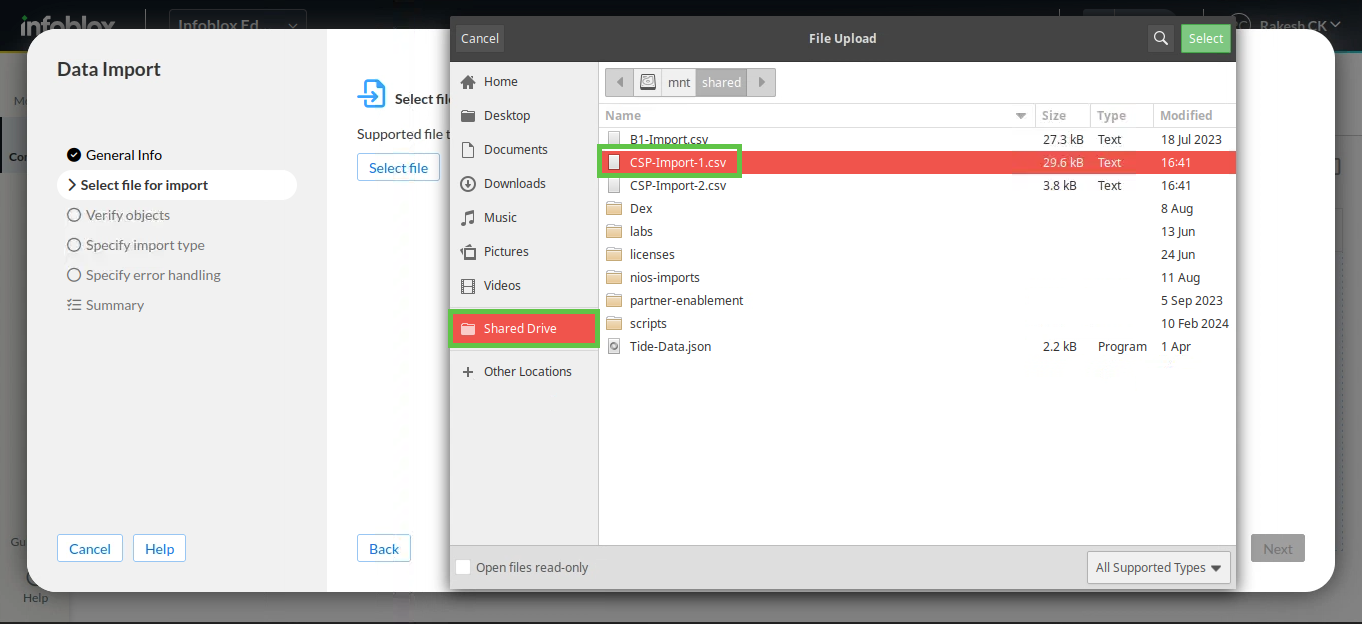
Click Next.
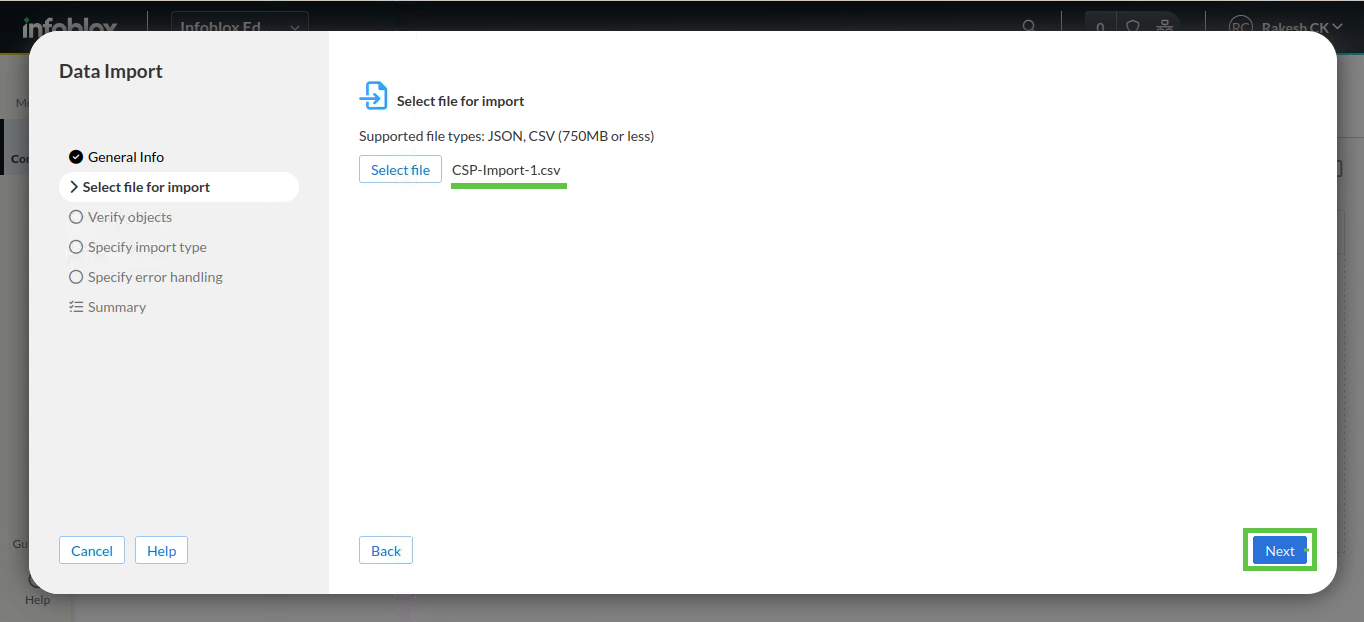
Our next step is to verify the objects we are importing. This allows us to be selective about which objects we import. Make sure that all object types are checked. Click Next.
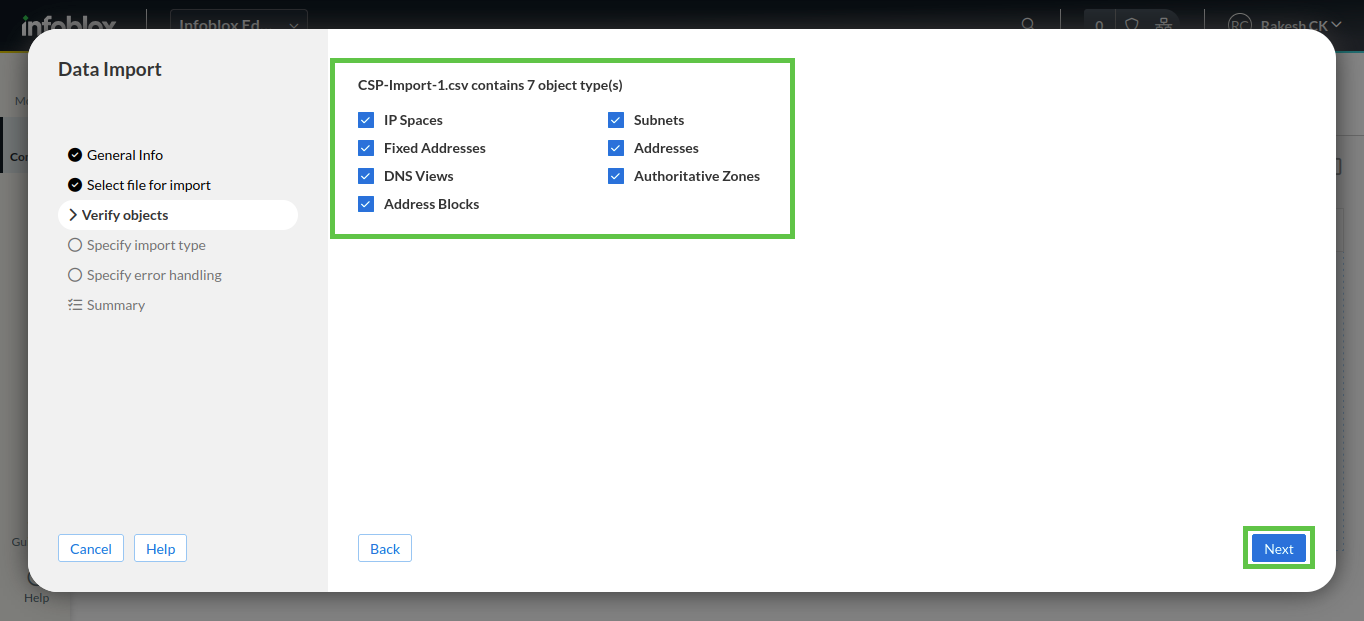
In the Specify import type section, we can select the action for each CSV import file entry. Since we are adding these objects, and not updating or deleting, choose Add new records from the imported file (if it is not already selected)
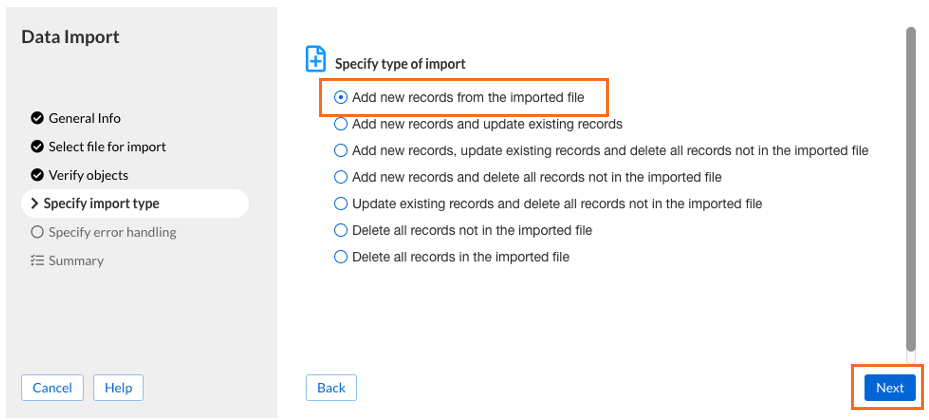
We now specify what action to take if there is an error. Select Skip failed records and continue import, and click Next
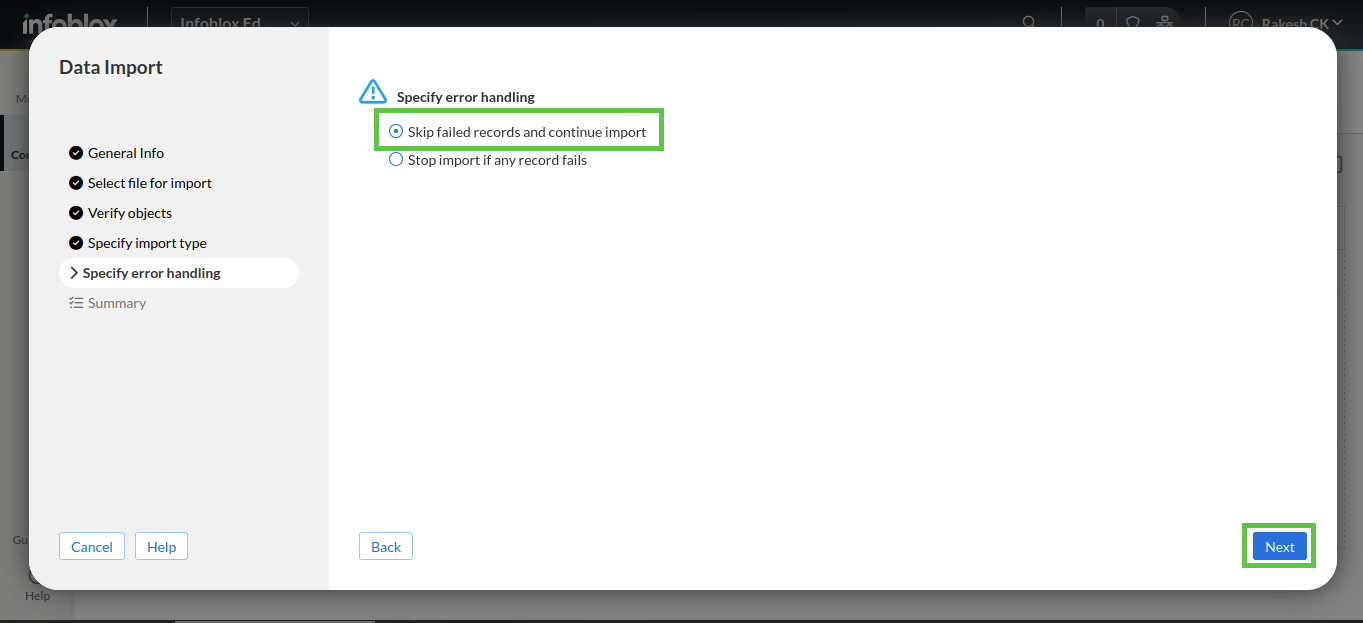
Review the Summary and click Start Import
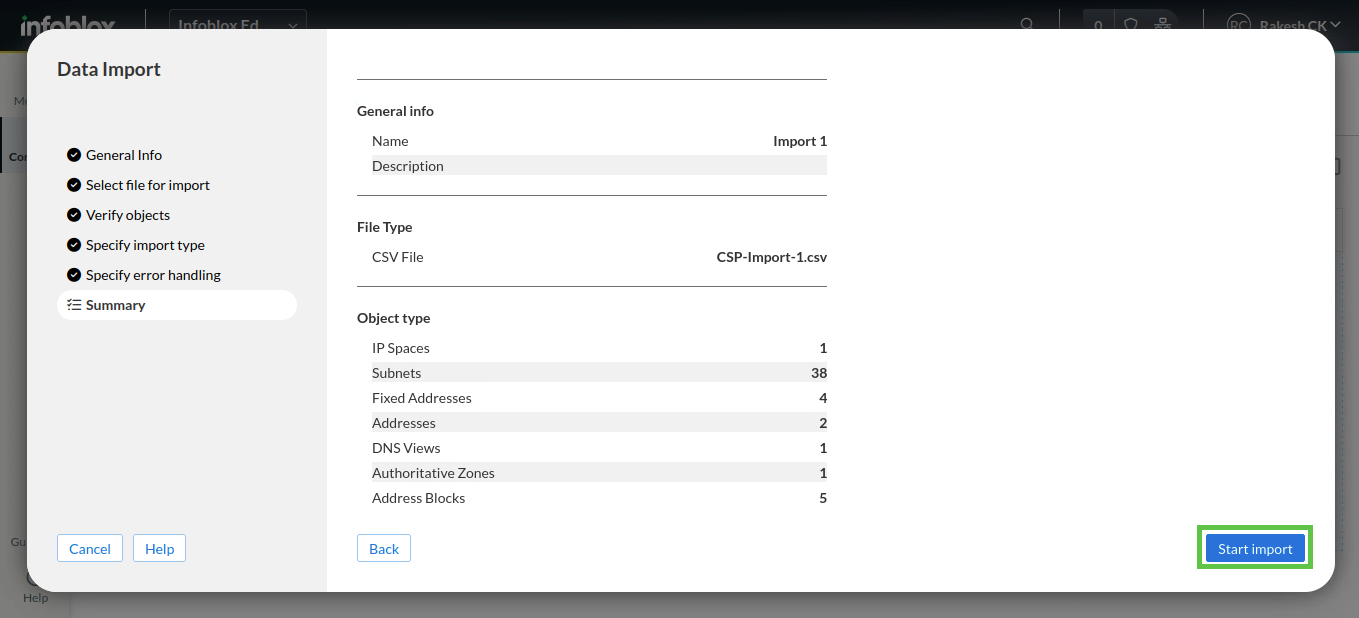
Verify that the job started

Once the status changes to Import completed, click on the dropdown.

Check to see if all objects are imported without errors.
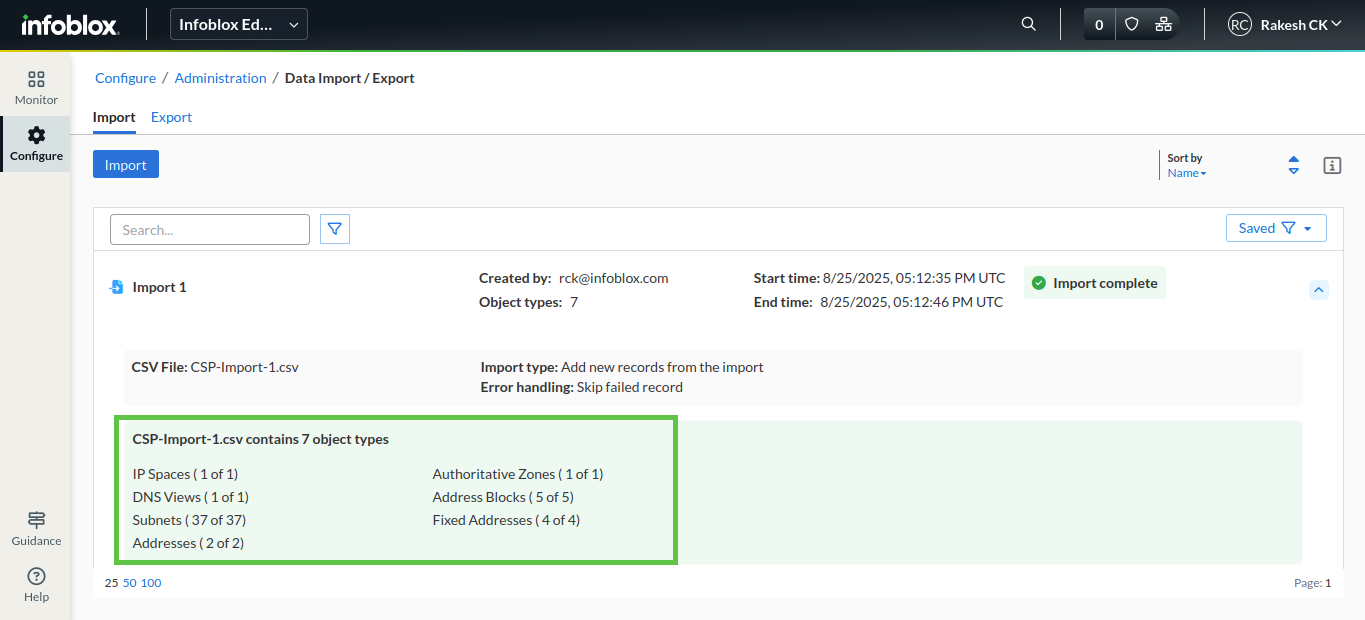
Task 3 Solution: Verify core objects
Using VM jump-desktop, log in to Infoblox Portal.
Navigate to Configure → Networking → IPAM / DHCP

Under the Address Spaces horizontal tab, you should be able to find IP Space Nimbus Aveonics

Click the Nimbus Aveonics IP Space to see the list of address blocks.
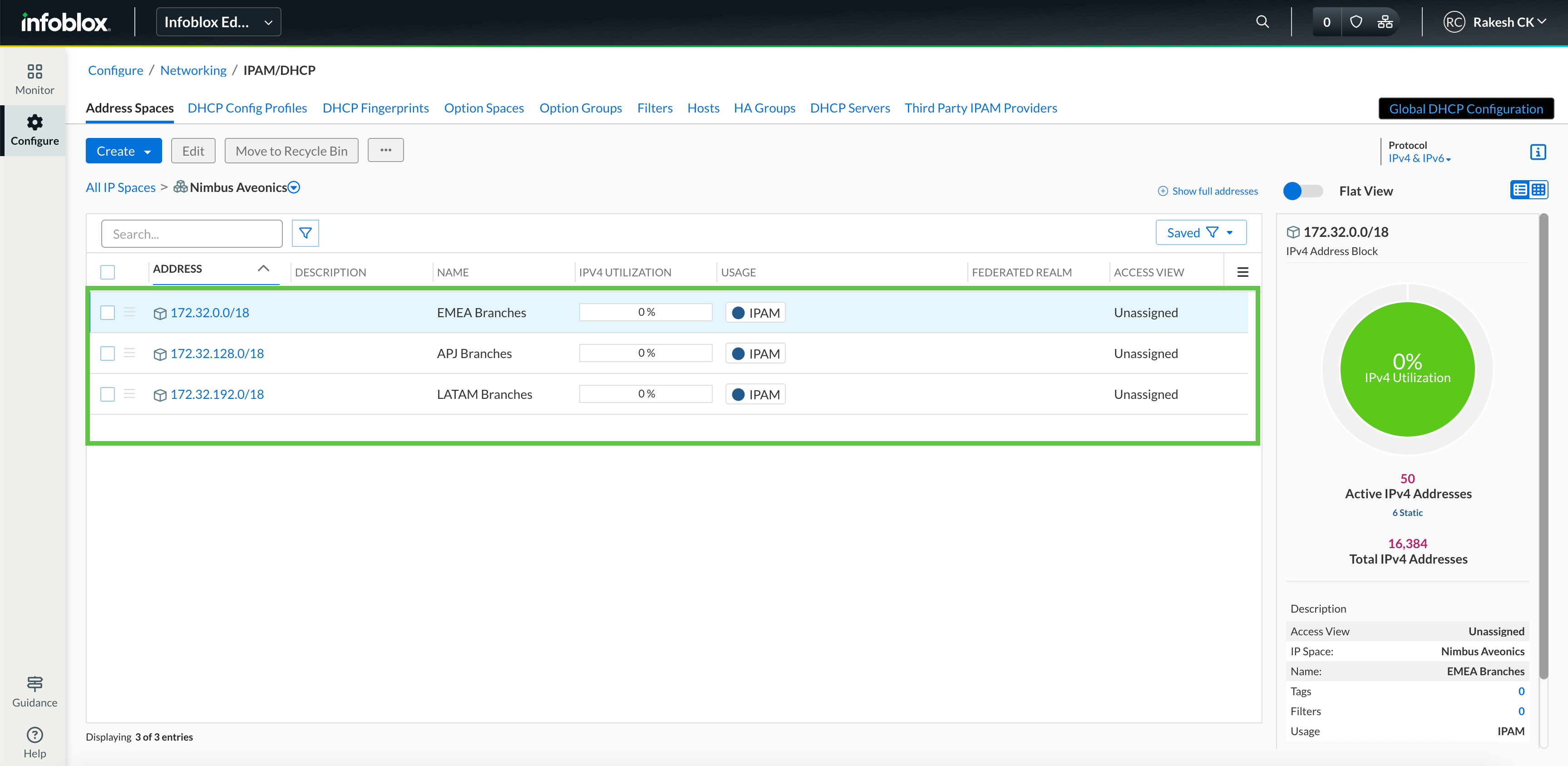
Click on the Address block 172.32.0.0/18 to see the subnets listed.
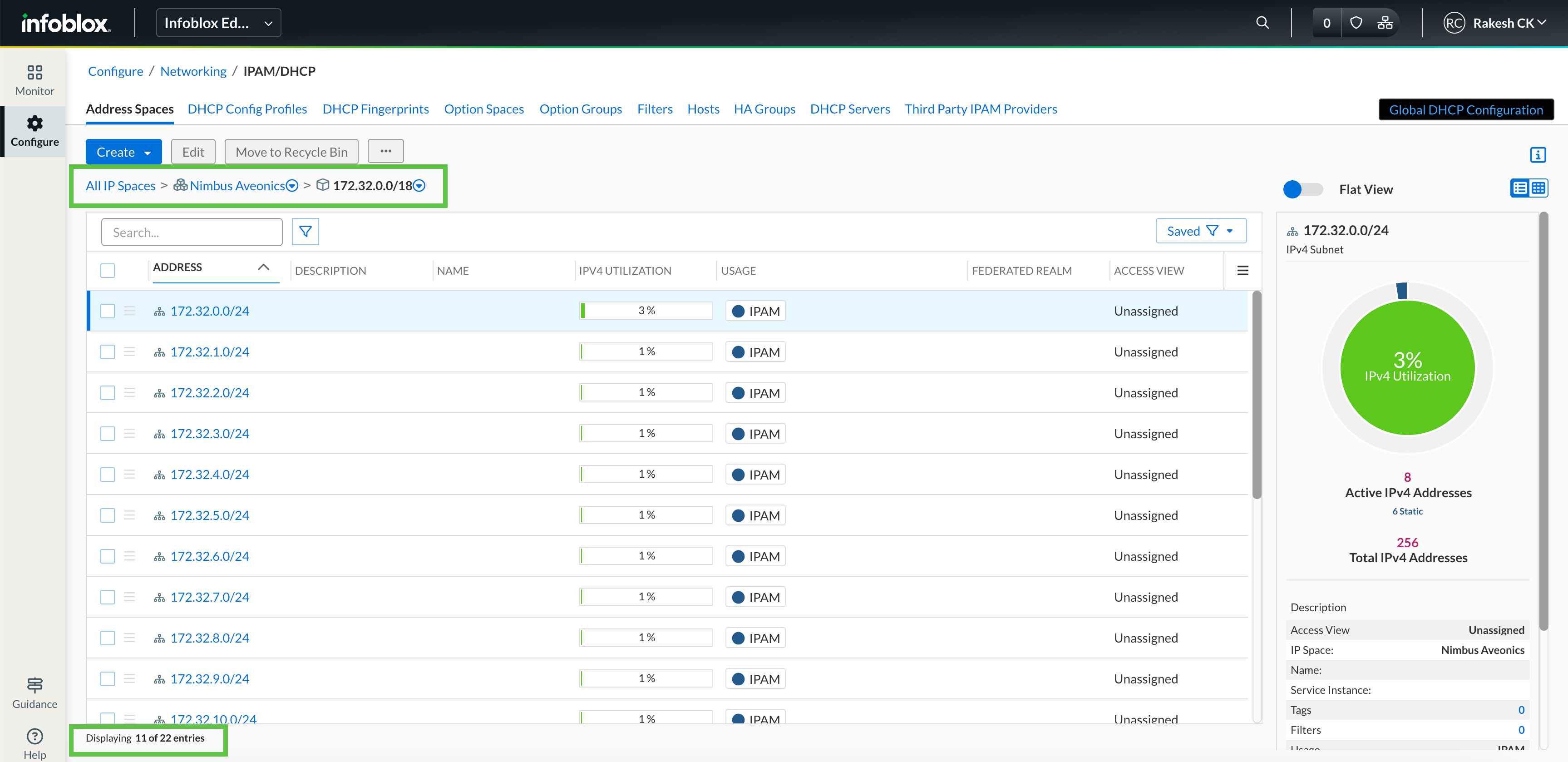
Click on the subnet 172.32.0.0/24 to see the fixed addresses and reservations listed.
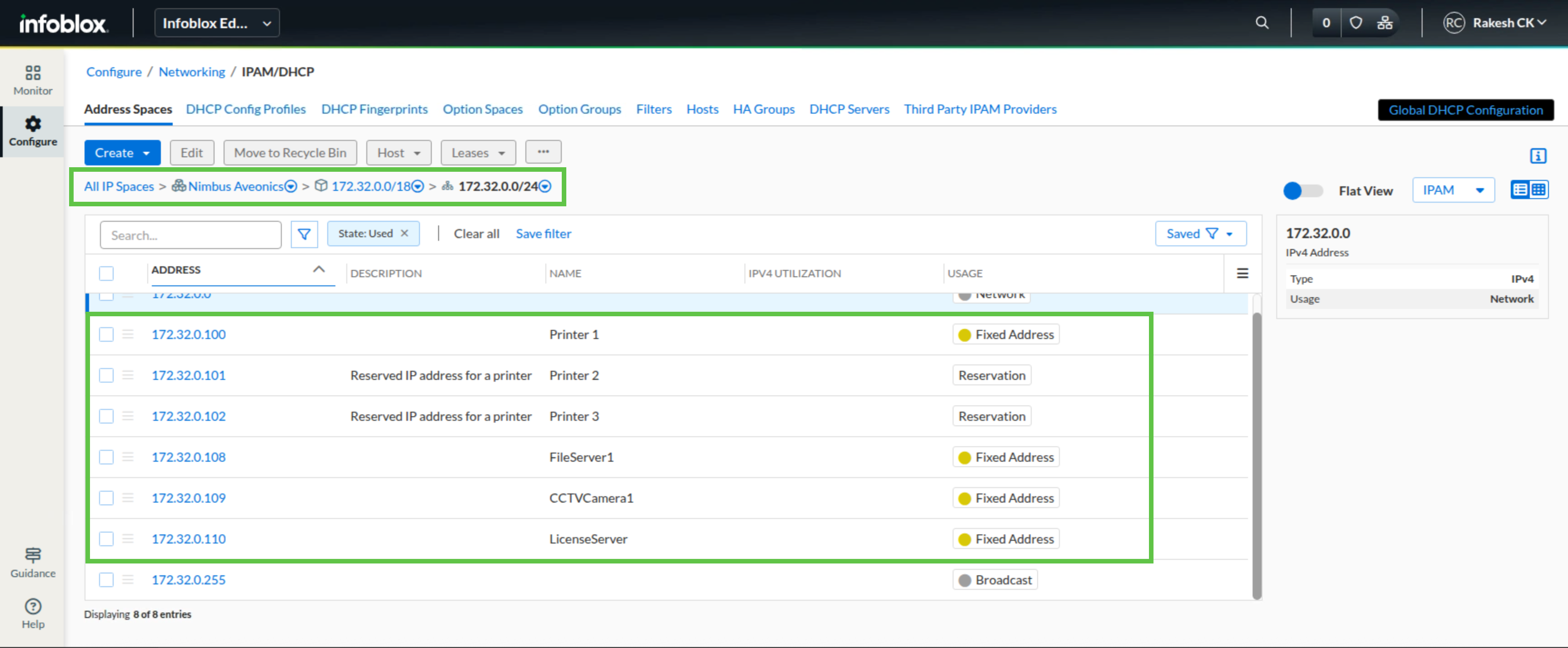
Now, navigate to Configure → Networking → DNS

Under the Zones horizontal bar, click on the default DNS View

You can see the primary zone nimbus.net listed
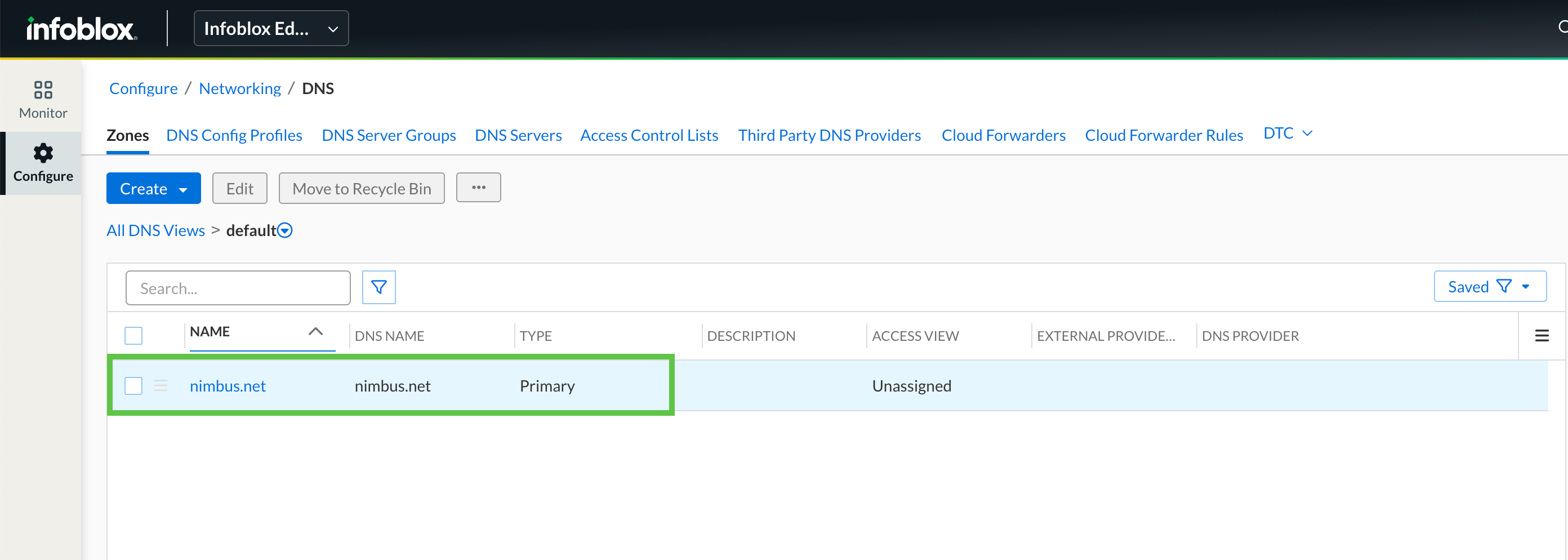
Task 4 Solution: Import the second CSV file
Using VM jump-desktop, log in to Infoblox Portal.
Navigate to Administration → Data Import / Export

Click on the Import submenu, and click the Import button to start configuring an Import process
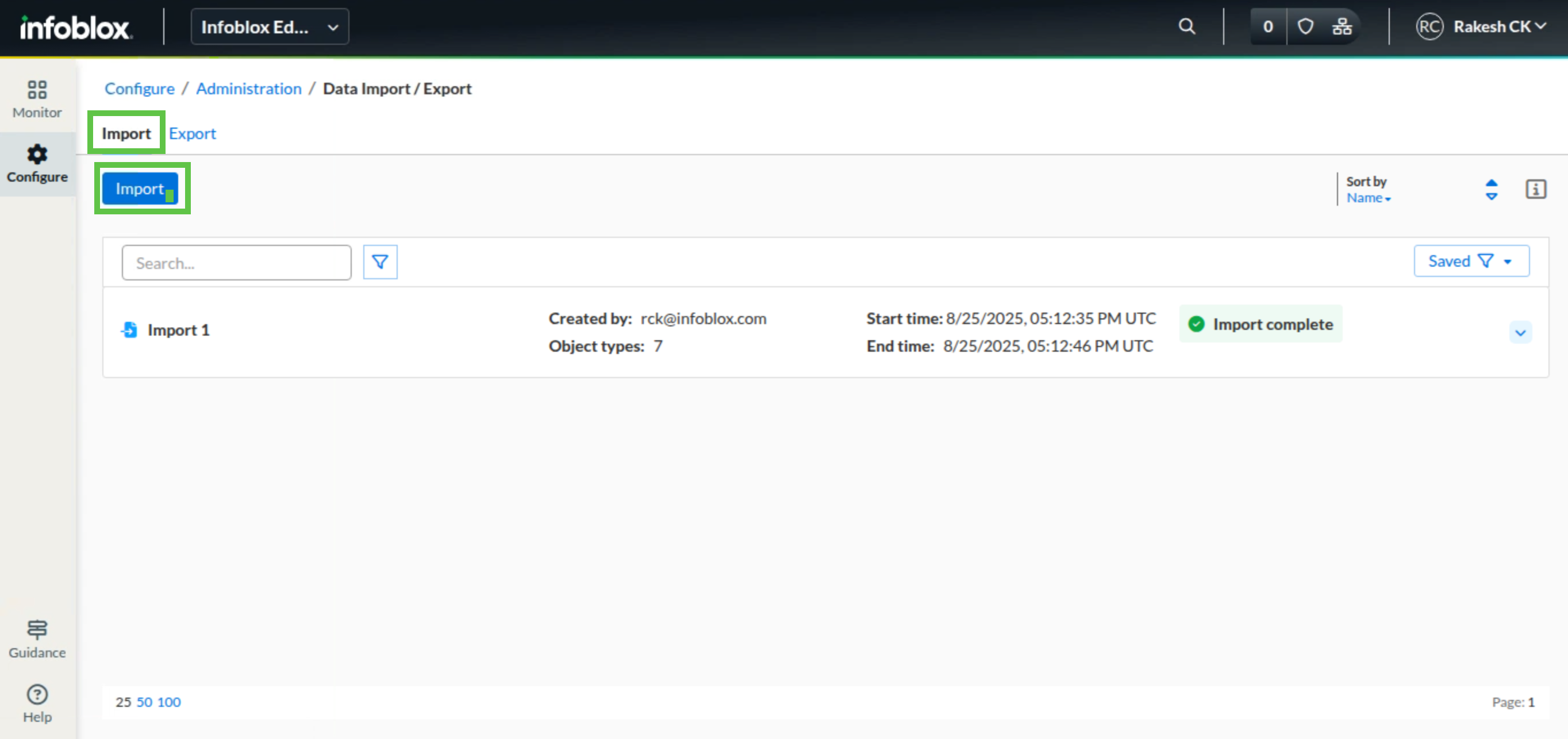
Give the Data Import the name Import 2 and click Next
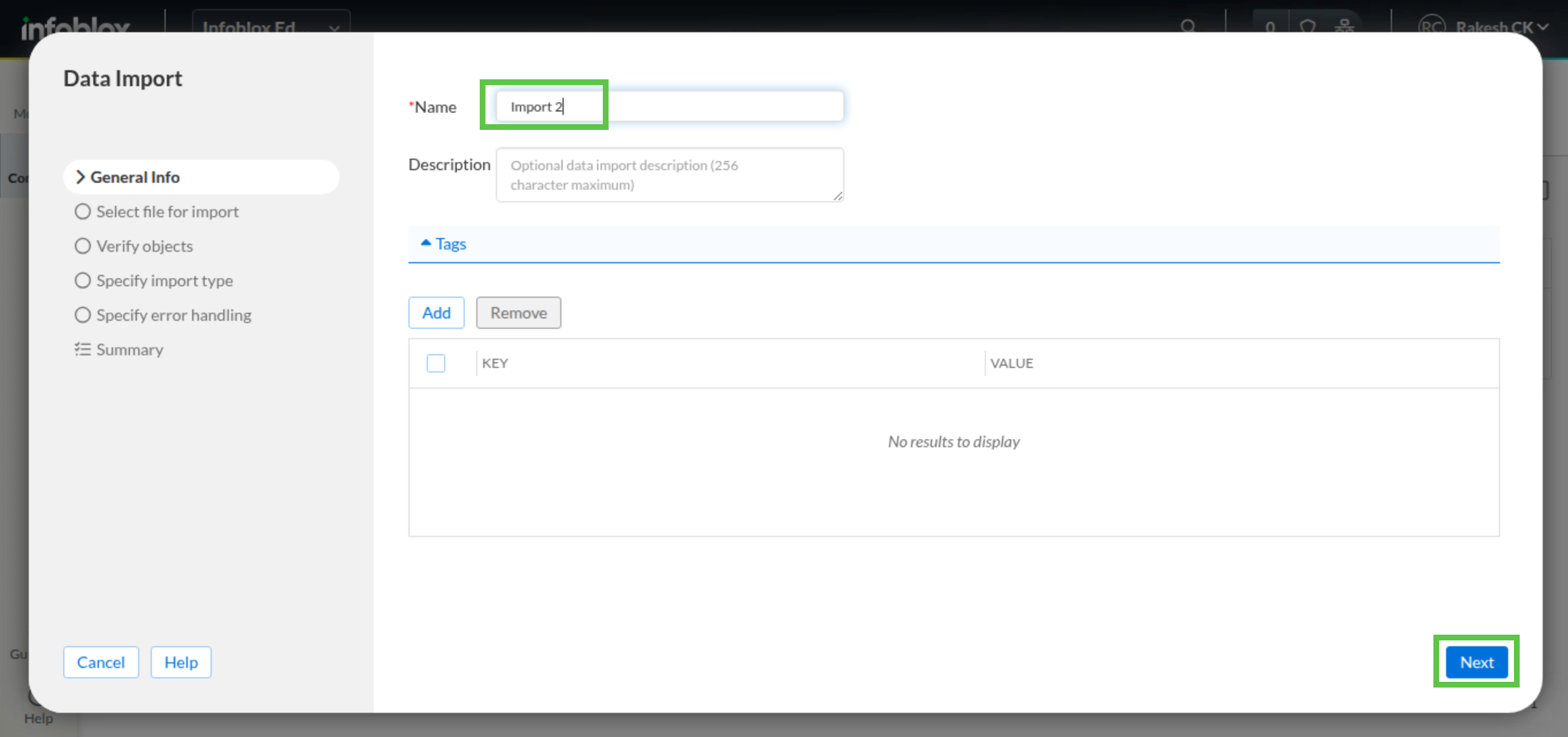
Click Select File

Select the CSV file in Shared Drive named CSP-Import-2.csv
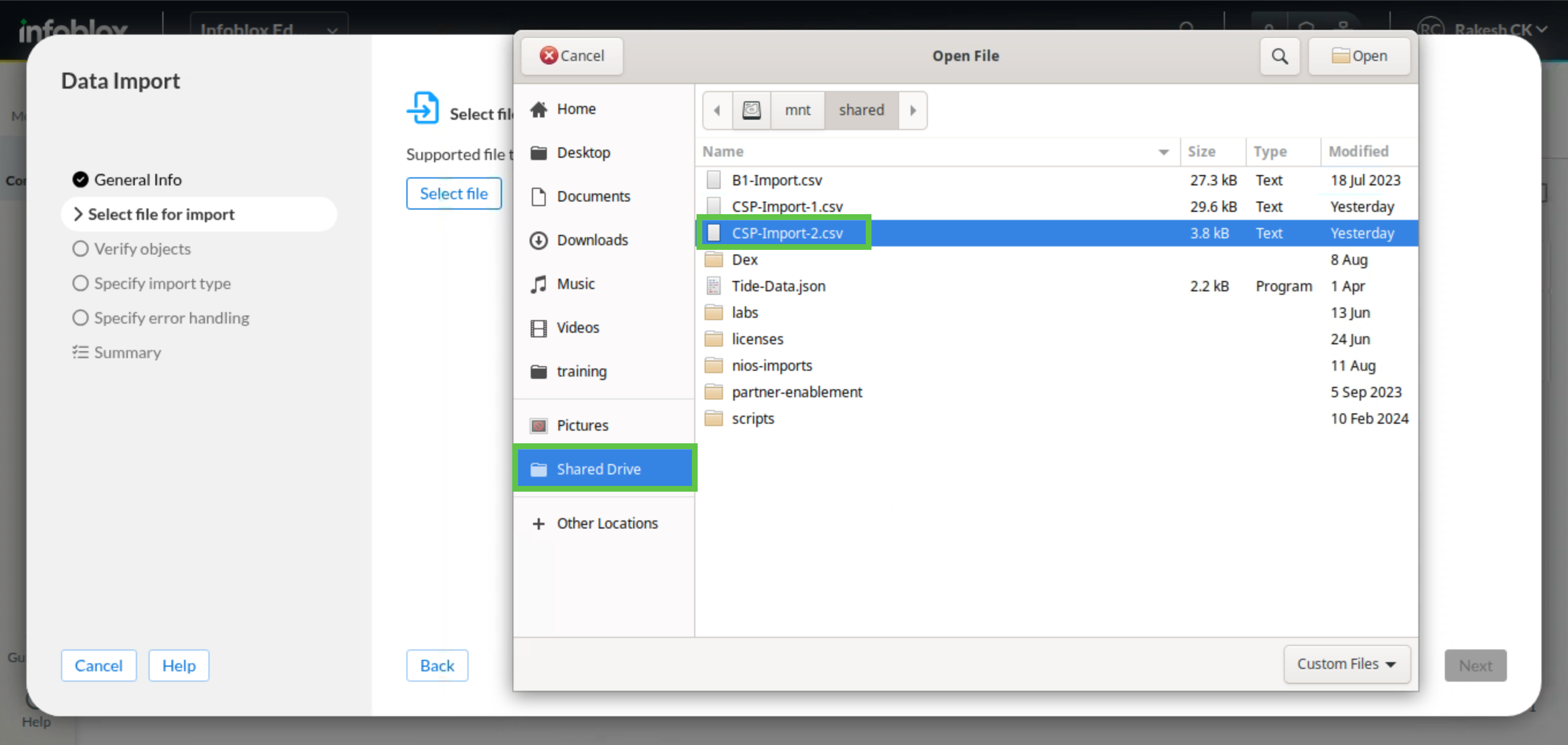
Click Next.
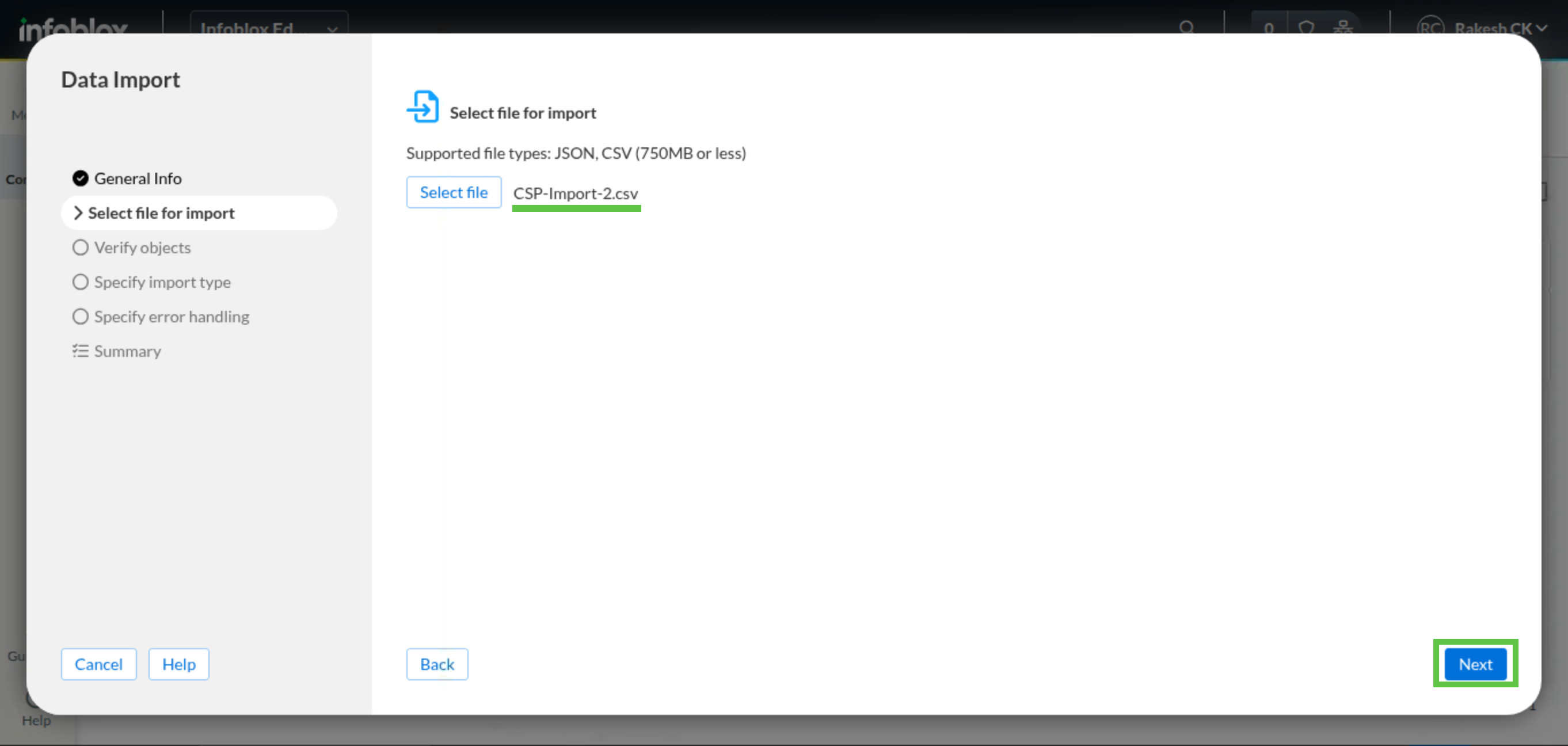
Our next step is to verify the objects we are importing. This allows us to be selective about which objects we import. Make sure that all object types are checked. Click Next.
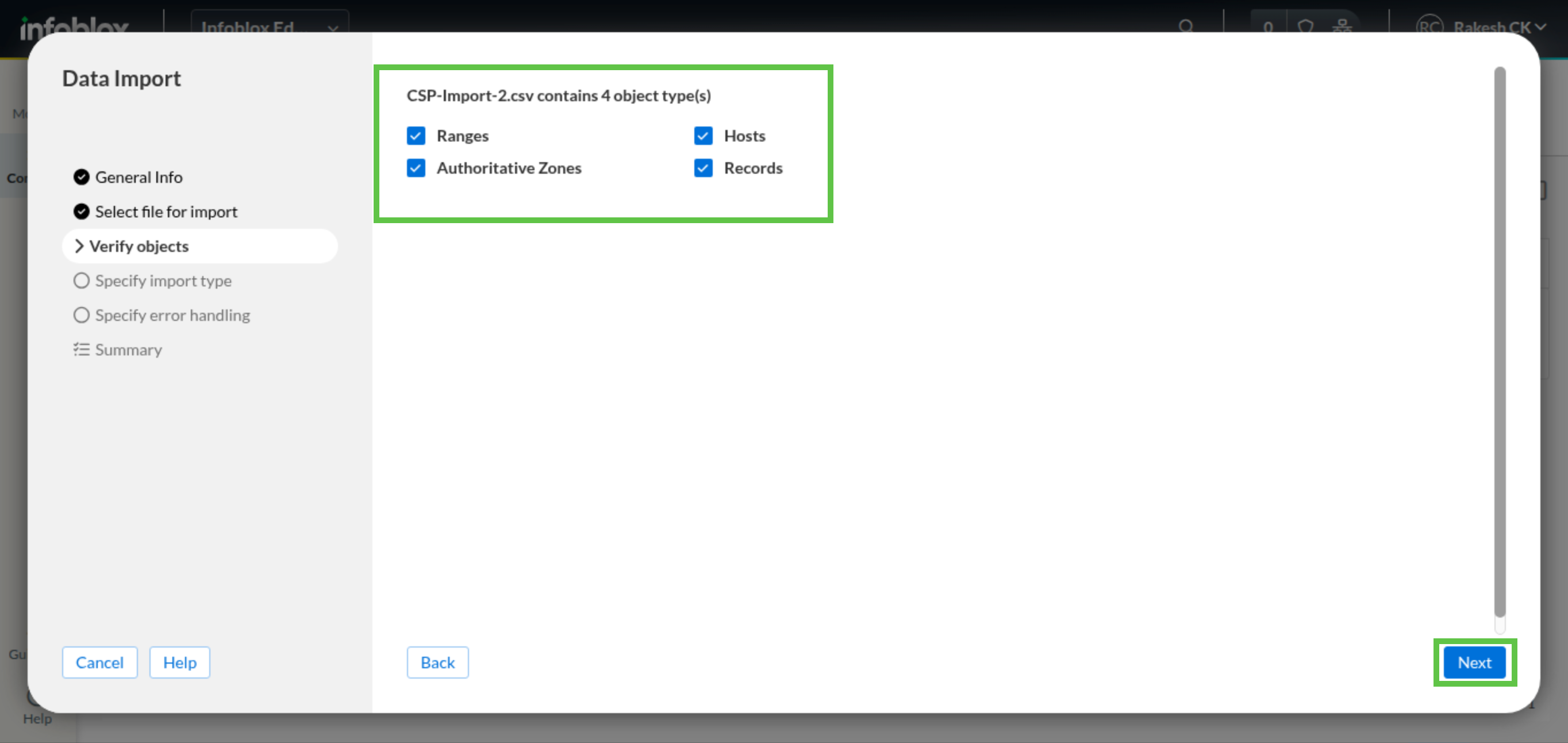
In the Specify import type section, we can select the action for each CSV import file entry. Since we are adding these objects, and not updating or deleting, choose Add new records from the imported file (if it is not already selected)

We now specify what action to take if there is an error. Select Skip failed records and continue import, and click Next

Review the Summary and click Start Import
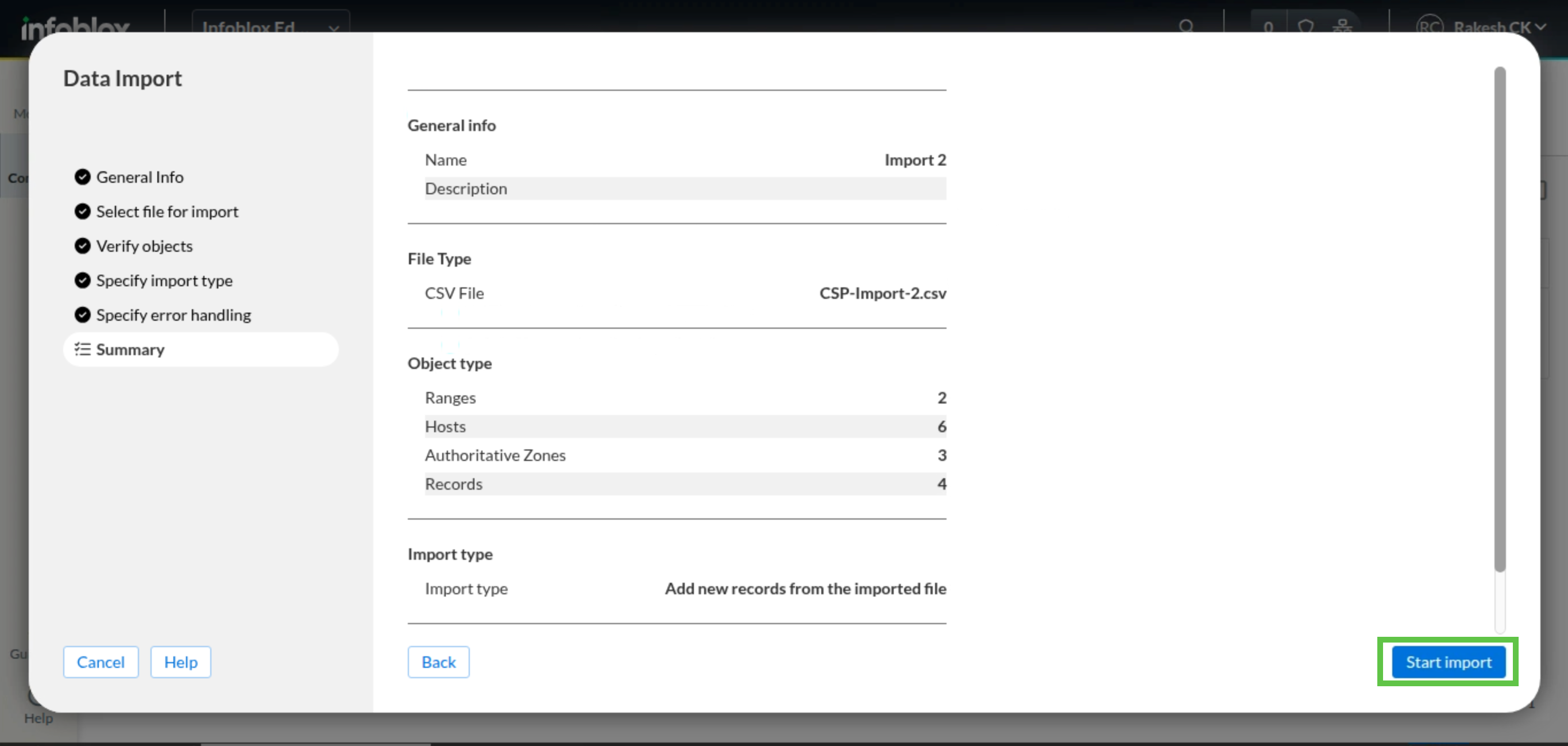
Verify that the job started
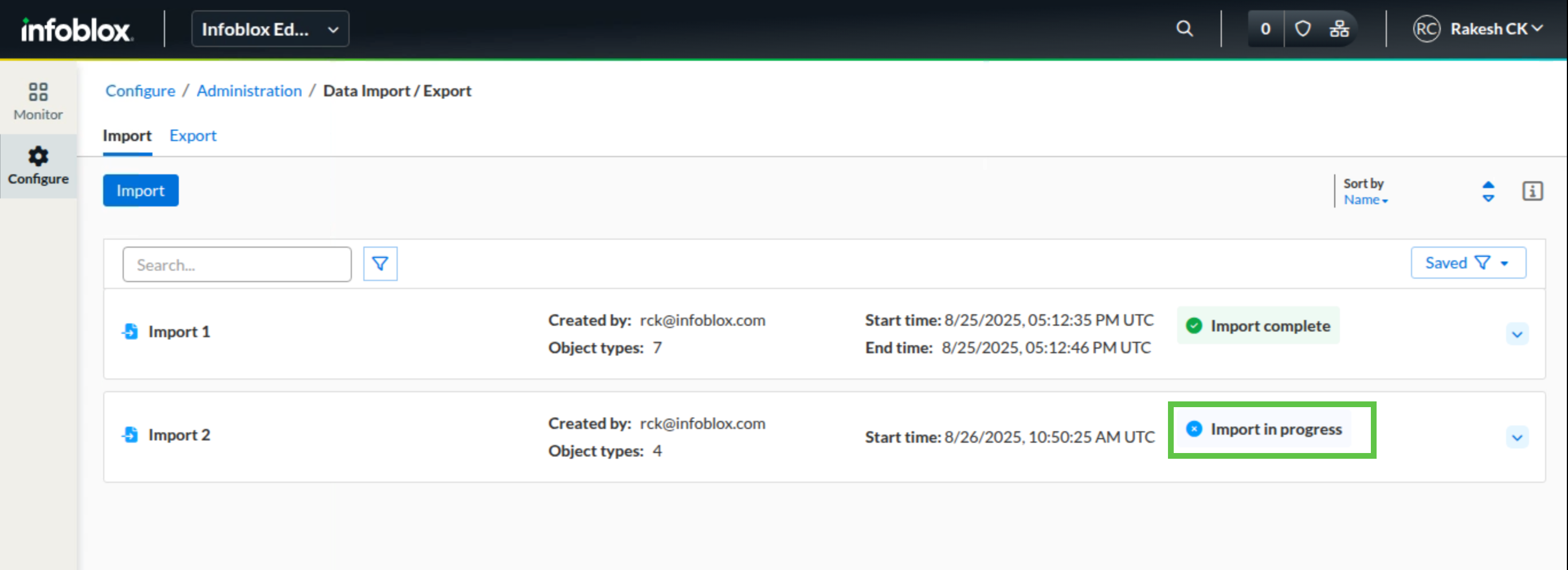
Once the status changes to Import completed, click on the dropdown.
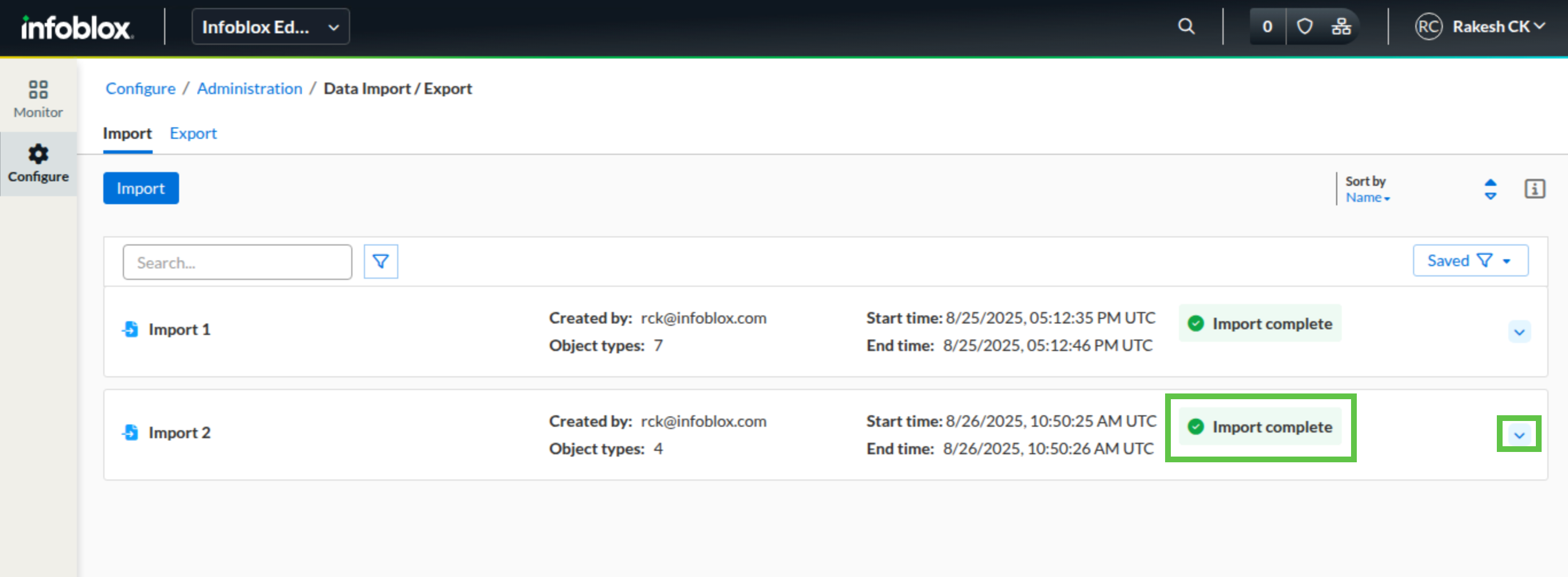
Check to see if all objects are imported without errors.
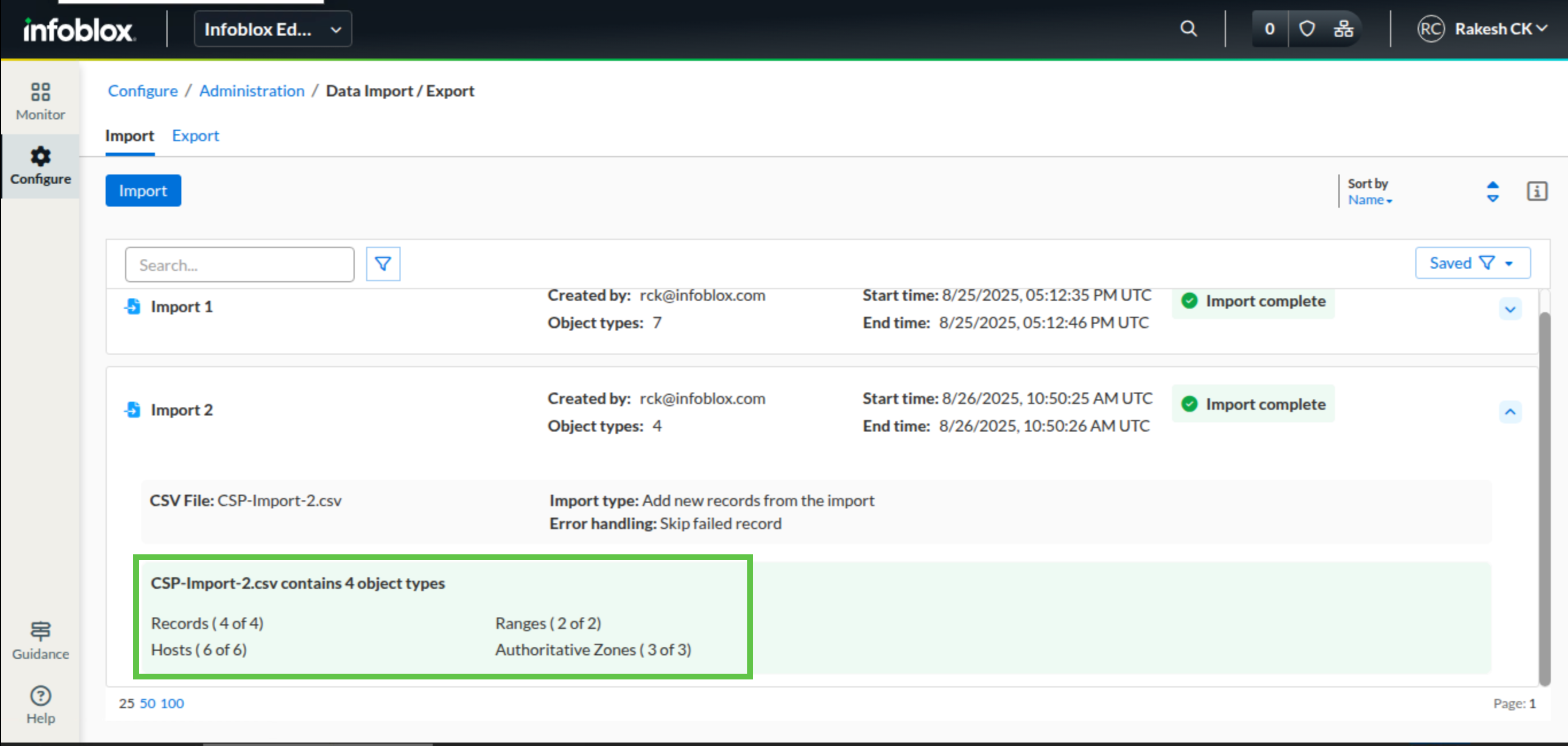
Task 5 Solution: Verify additional objects
Using VM jump-desktop, log in to Infoblox Portal.
Navigate to Configure → Networking → IPAM / DHCP
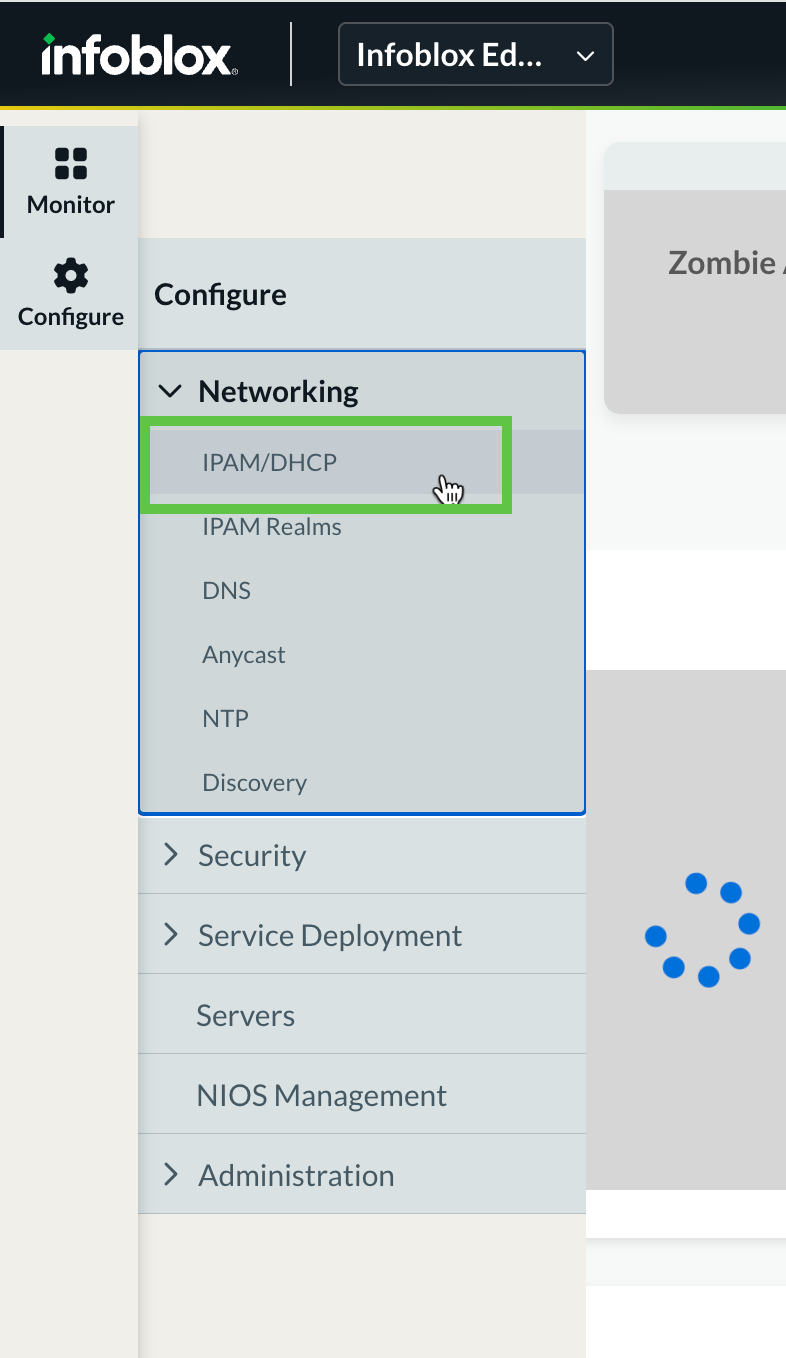
Under the Address Spaces horizontal tab, navigate to IP Space Nimbus Aveonics → 172.32.0.0/18 → 172.32.0.0/24, you will find the DHCP range 172.32.0.10 - 172.32.0.20.
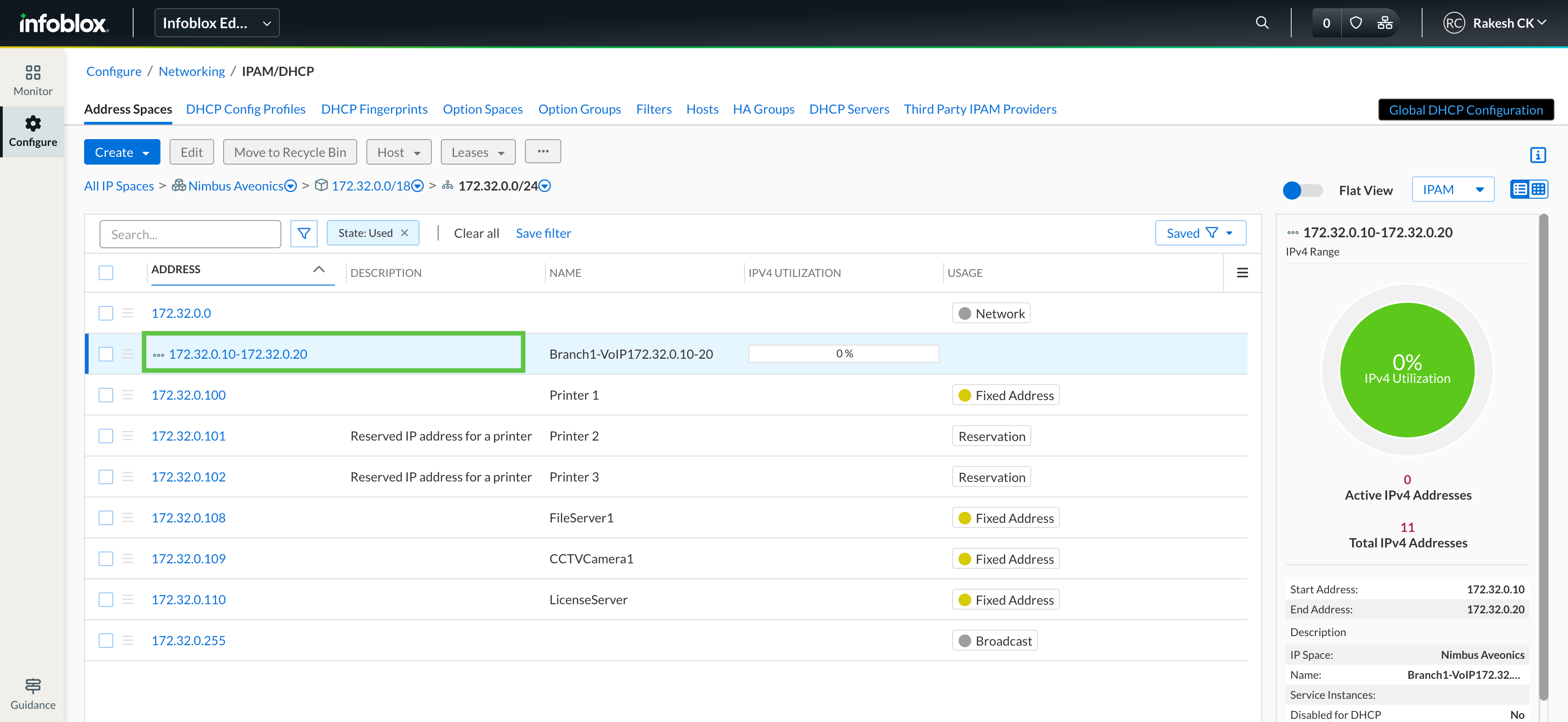
Now, navigate to Configure → Networking → DNS
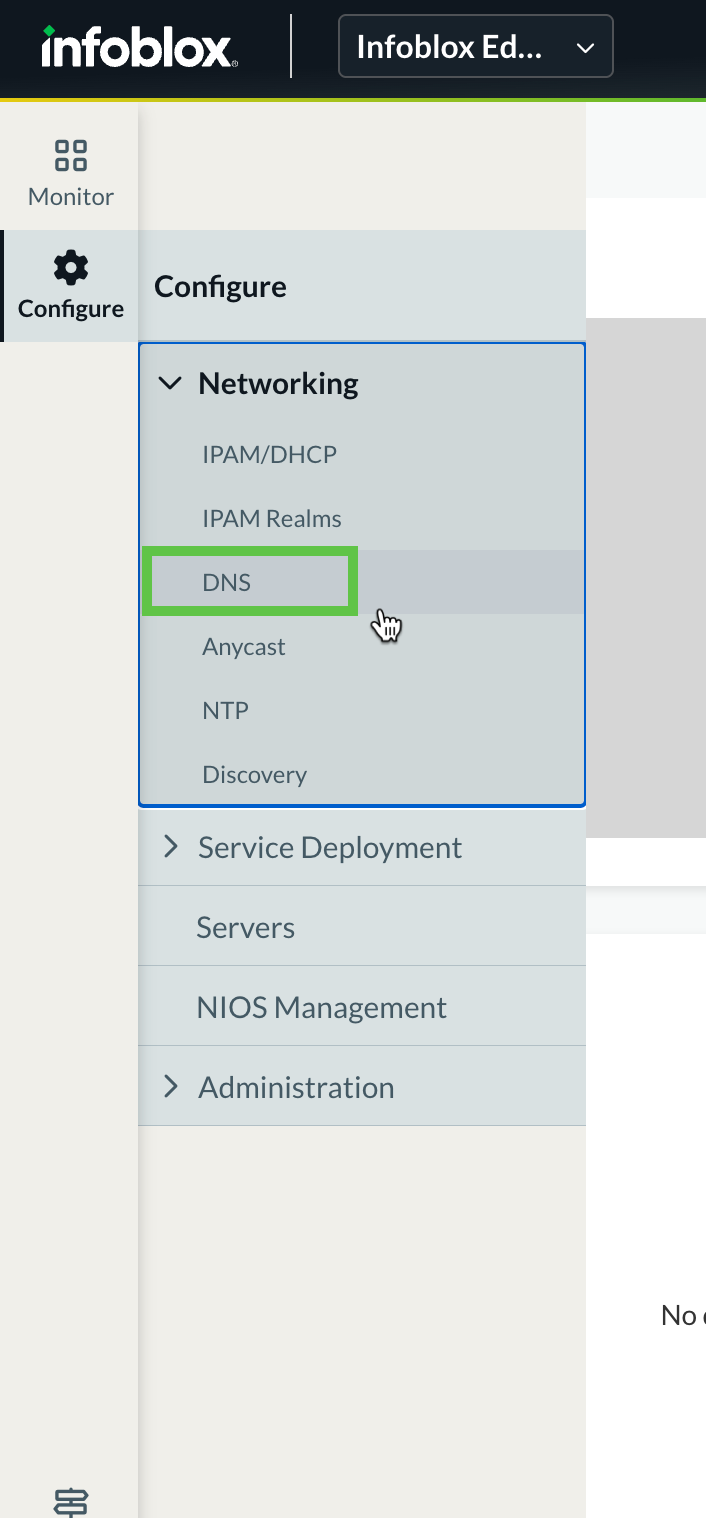
Under the Zones horizontal bar, click on the DNS View default → nimbus.net, you will see A records, MX record, and subzones.
